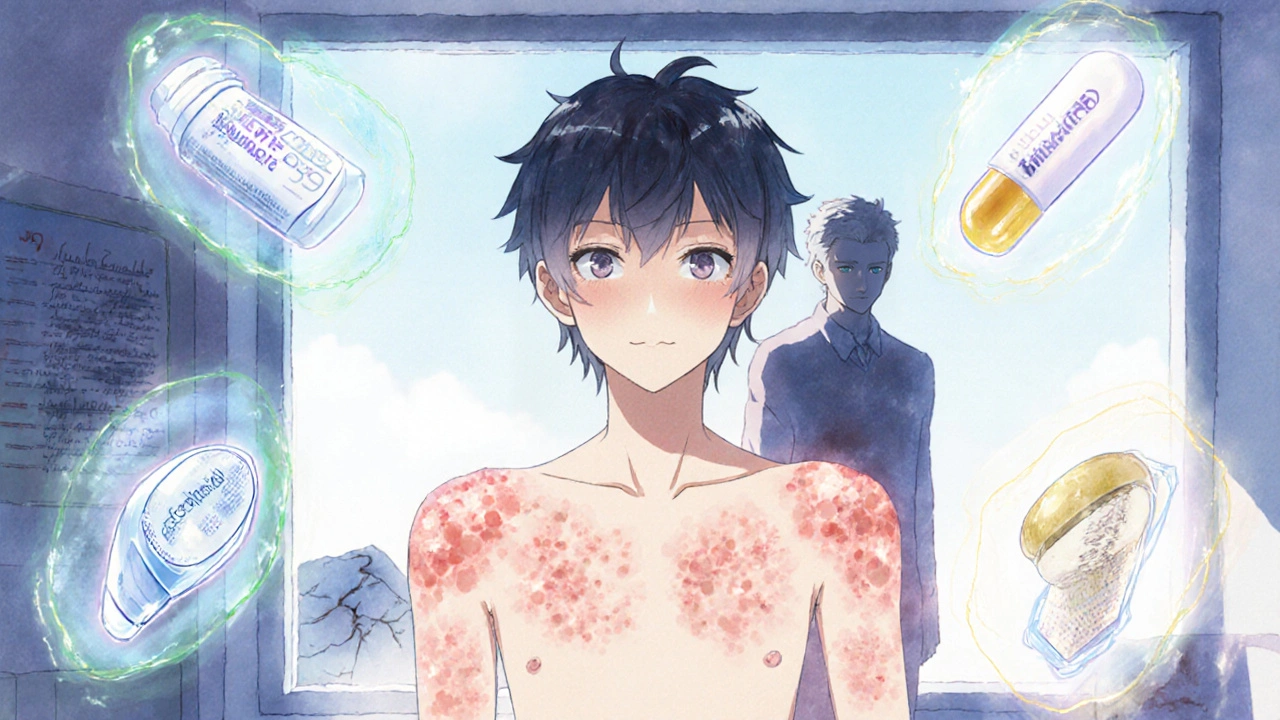Dapsone treats skin conditions like dermatitis herpetiformis and leprosy, but side effects like anemia and nerve damage are common. Learn about safer, effective alternatives including colchicine, doxycycline, and rituximab.
Read MoreDapsone Side Effects: What You Need to Know Before Taking It
When you’re prescribed dapsone, an antibiotic and anti-inflammatory drug used for leprosy, dermatitis herpetiformis, and certain types of pneumonia. Also known as diaminodiphenyl sulfone, it’s been around for decades but still carries risks you can’t ignore. It’s not a drug you take lightly — even if your doctor says it’s necessary, you need to know what your body might do in response.
Dapsone side effects aren’t just a list of rare complications. For some people, they show up fast. Skin rashes, itching, or redness are common early signs. But then there’s the bigger concern: hemolytic anemia, a condition where red blood cells break down too quickly. This hits harder if you have G6PD deficiency — a genetic condition many don’t know they have until they take dapsone. That’s why doctors often check your blood before starting. Another serious risk is methemoglobinemia, a blood disorder that reduces oxygen delivery. You might notice your lips or fingernails turning blue, feel dizzy, or get short of breath. If that happens, stop taking it and get help right away.
Not everyone gets these bad reactions, but you can’t predict who will. Some people deal with headaches, nausea, or trouble sleeping. Others report tingling in their hands or feet — a sign nerve damage might be starting. Long-term use can affect your liver or cause changes in your blood counts. That’s why regular blood tests aren’t optional. They’re your safety net. And if you’re on dapsone for skin conditions like dermatitis herpetiformis, you might think it’s harmless because you’re not sick with an infection. But it’s still a powerful drug. It works by suppressing your immune system in places it shouldn’t. That’s why you need to watch for signs of infection — fevers, sore throats, or unusual fatigue.
What you won’t find in most drug leaflets is how often people stop dapsone because of side effects. In real life, many switch to other treatments after a few weeks. That’s not failure — it’s smart management. The goal isn’t just to take the pill. It’s to stay healthy while you take it. That’s why the posts below cover real experiences: how people spotted problems early, what blood tests mattered most, how they talked to their doctors when things felt off, and what alternatives worked when dapsone didn’t. You’ll find stories from people who managed rashes without quitting, others who had to change drugs after dangerous drops in their blood counts, and tips on how to track symptoms so you don’t miss the warning signs. This isn’t theory. It’s what people actually lived through — and what you need to know before you start.
